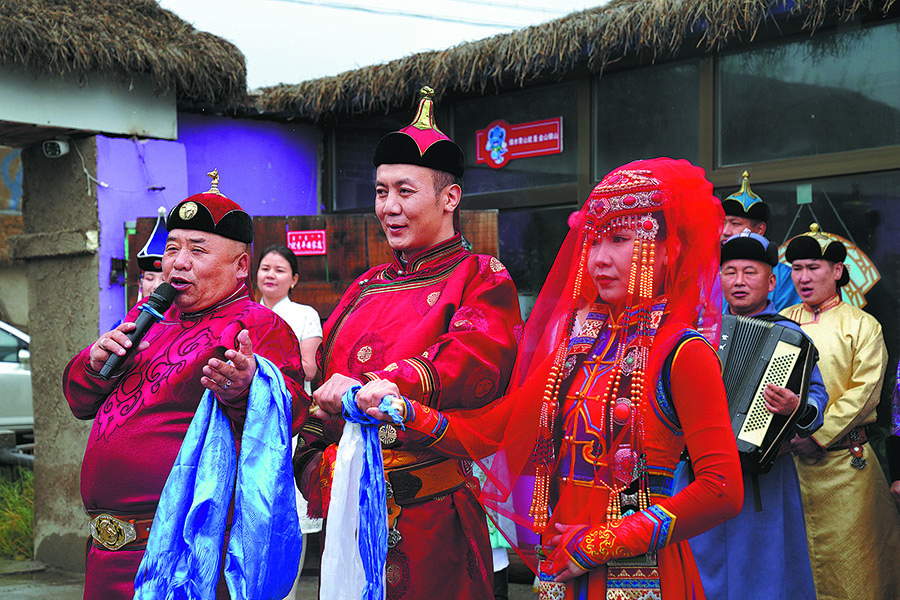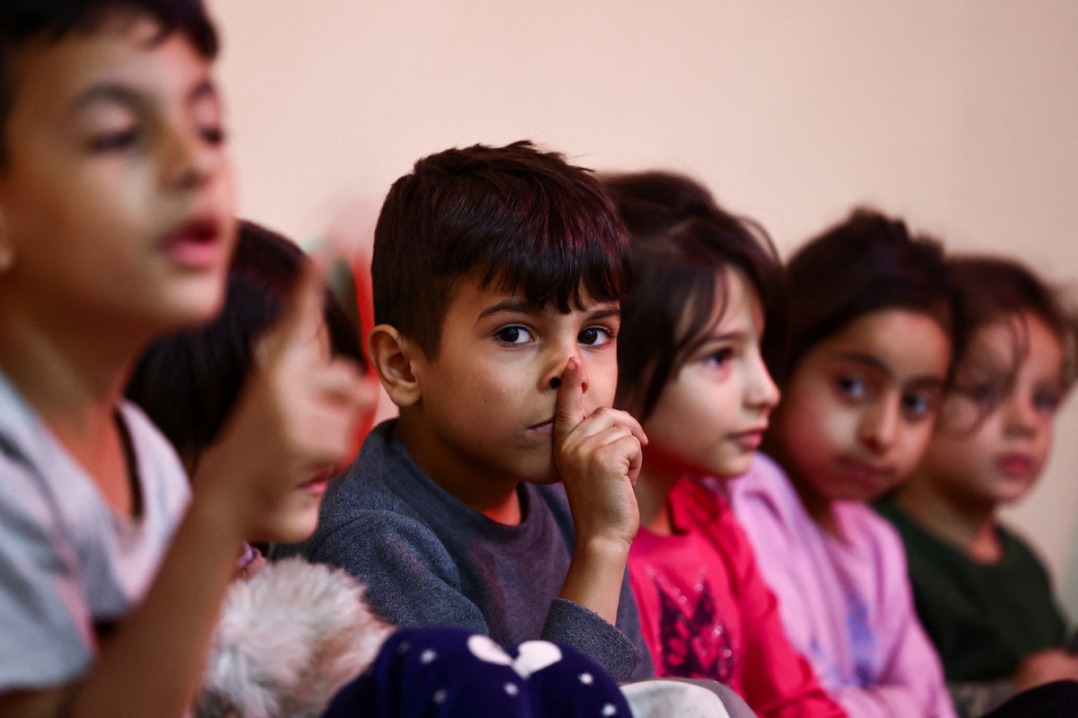Boom time in the borderlands


Ethnic culture, frontier spirit and natural bounty all part of remote village's growing touristic appeal, Xu Lin and Mao Weihua report in Bortala, Xinjiang.
Two and a half centuries ago, their ancestors held fort at the border, ordered by their emperor to do so. Now, the residents of Bogdal, in traditional costumes, welcome visitors to their village for a glimpse of their remarkable history.
To solemn background music, a group of soldiers in historical costumes slowly approach on horseback, evoking the village's heritage.
During the reign of Emperor Qianlong of the Qing Dynasty (1644-1911), several thousand Mongolian soldiers and their families were ordered to migrate westward to Xinjiang to garrison the border.
They endured hardships and only reached their destination after a long and arduous journey. Nowadays, their descendants form the majority of Bogdal's population.
Located in the Bortala Mongolian autonomous prefecture in the Xinjiang Uygur autonomous region, Bogdal village is inhabited by the Mongolian, Kazak, Uygur and Han ethnic groups.
Originally a pastoral community, it has become an emerging tourist destination in recent years.
In summer, visitors enjoy the massive fields of fragrant clary; in winter, they soak in nearby hot springs and go skiing.
The major draws include experiencing ethnic culture and sampling delicious food in Mongolian or Kazak-style yurts.
They can practice archery and watch a village gate-opening ceremony in the daytime, enjoy a bonfire party and delight in cultural performances at night.
























